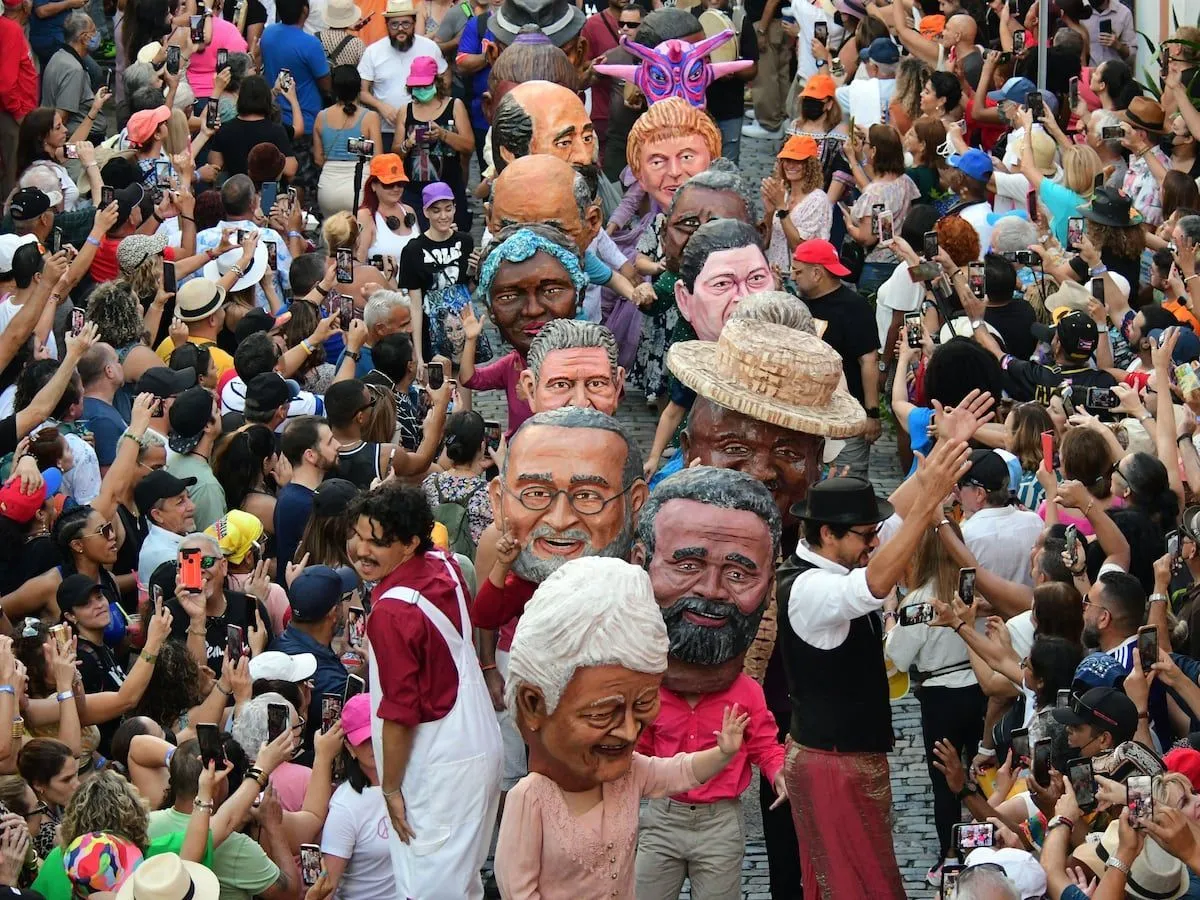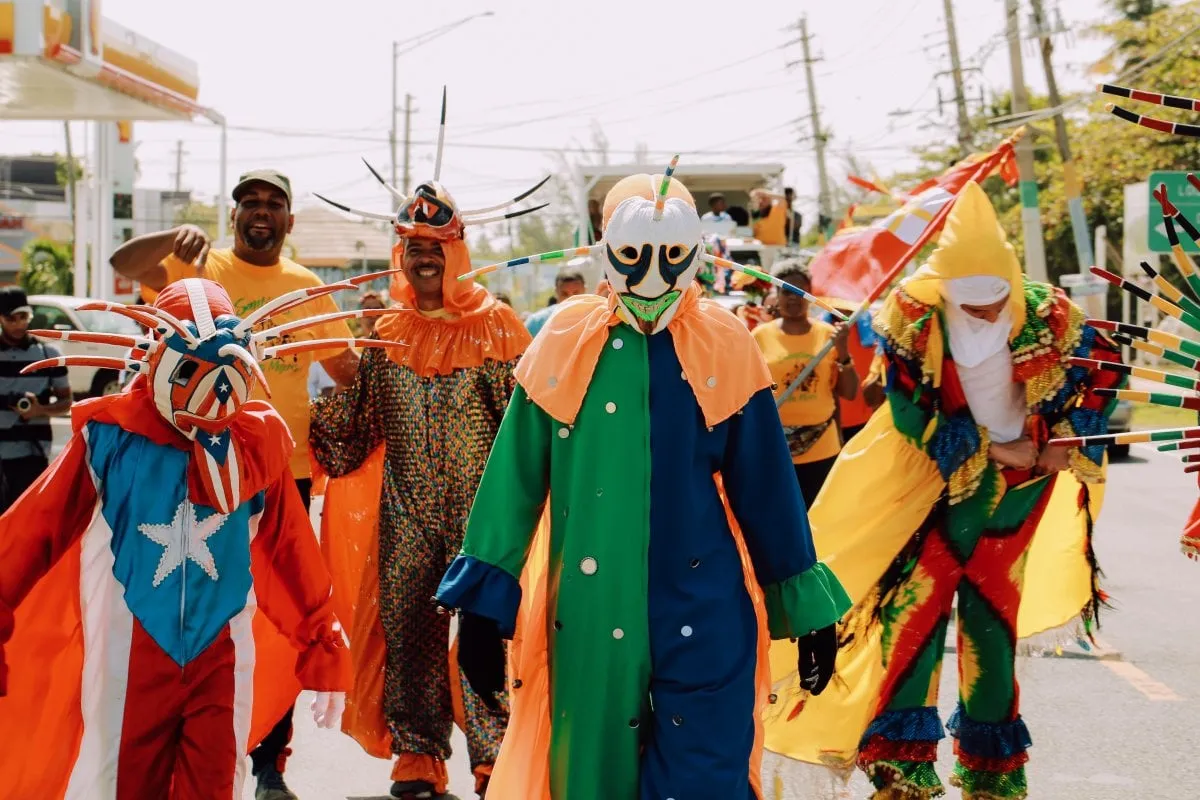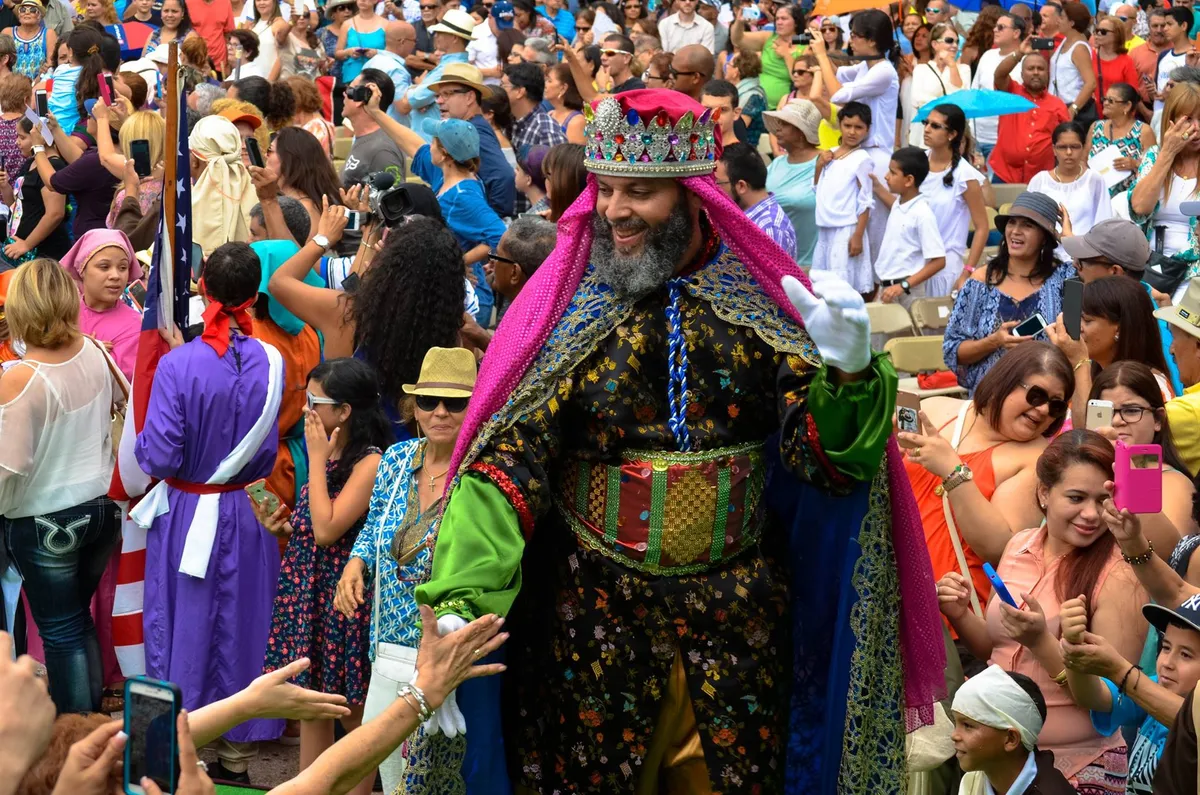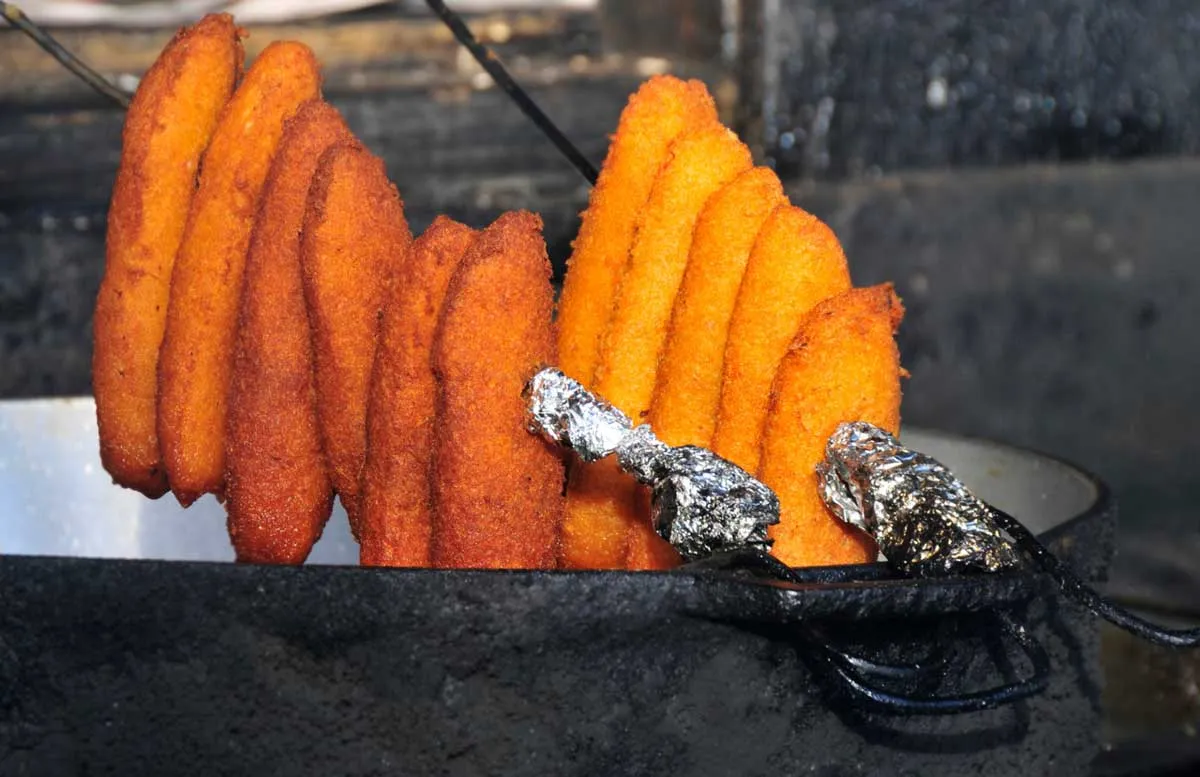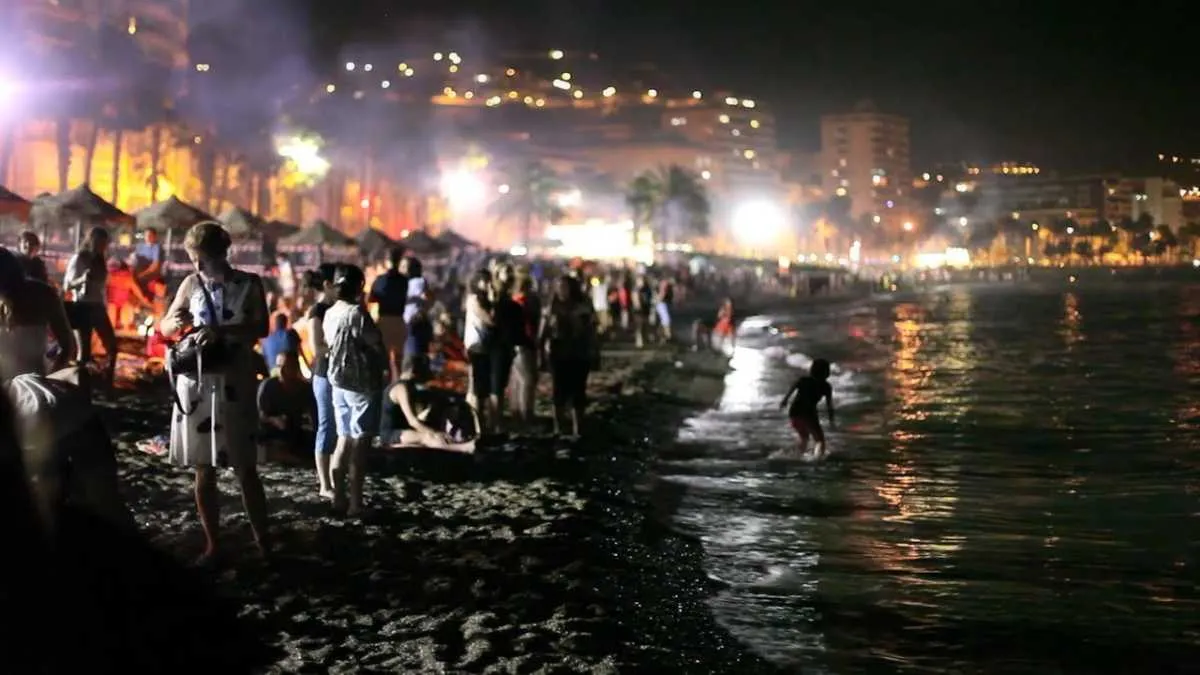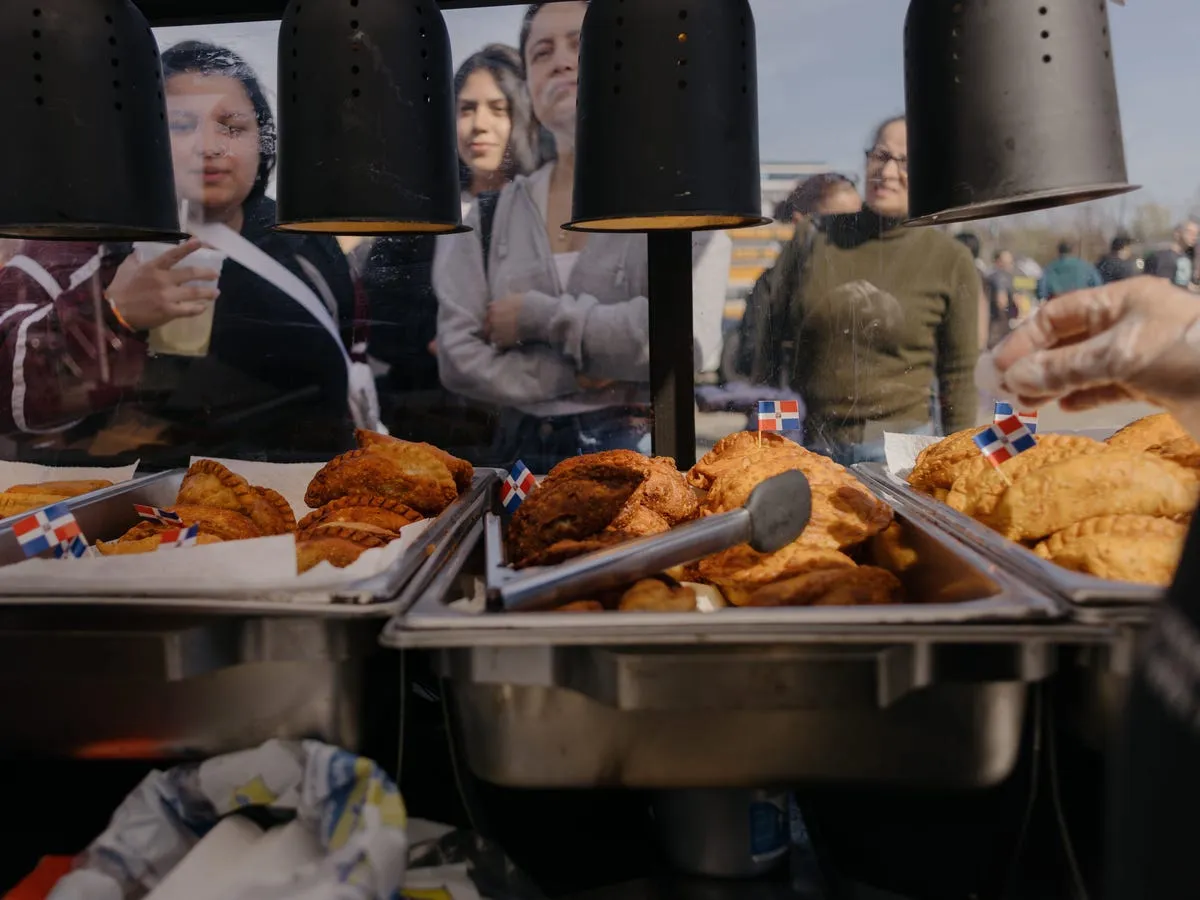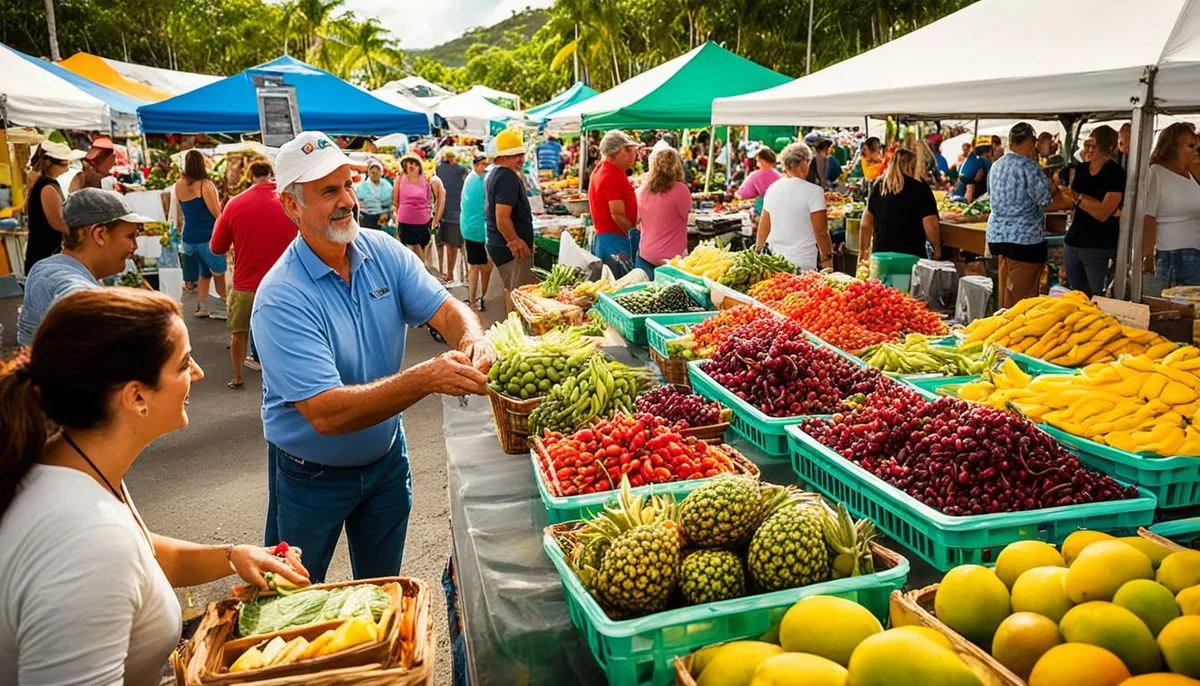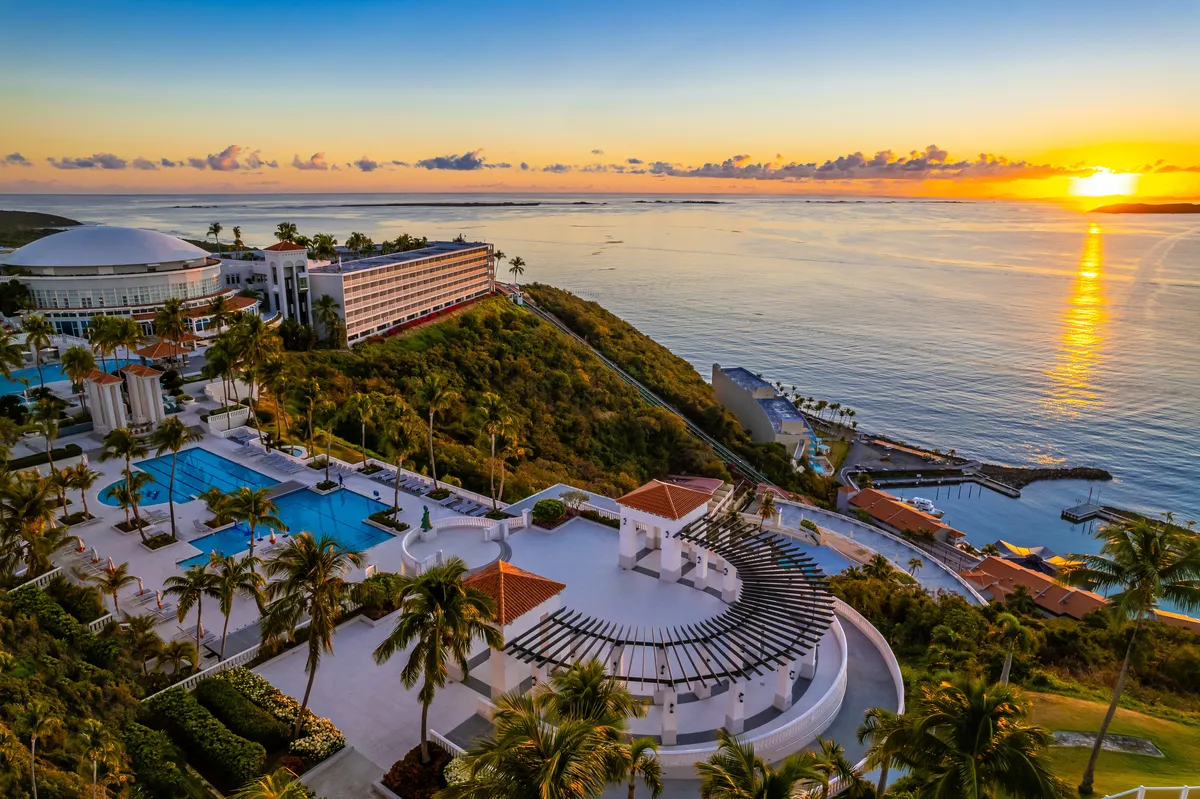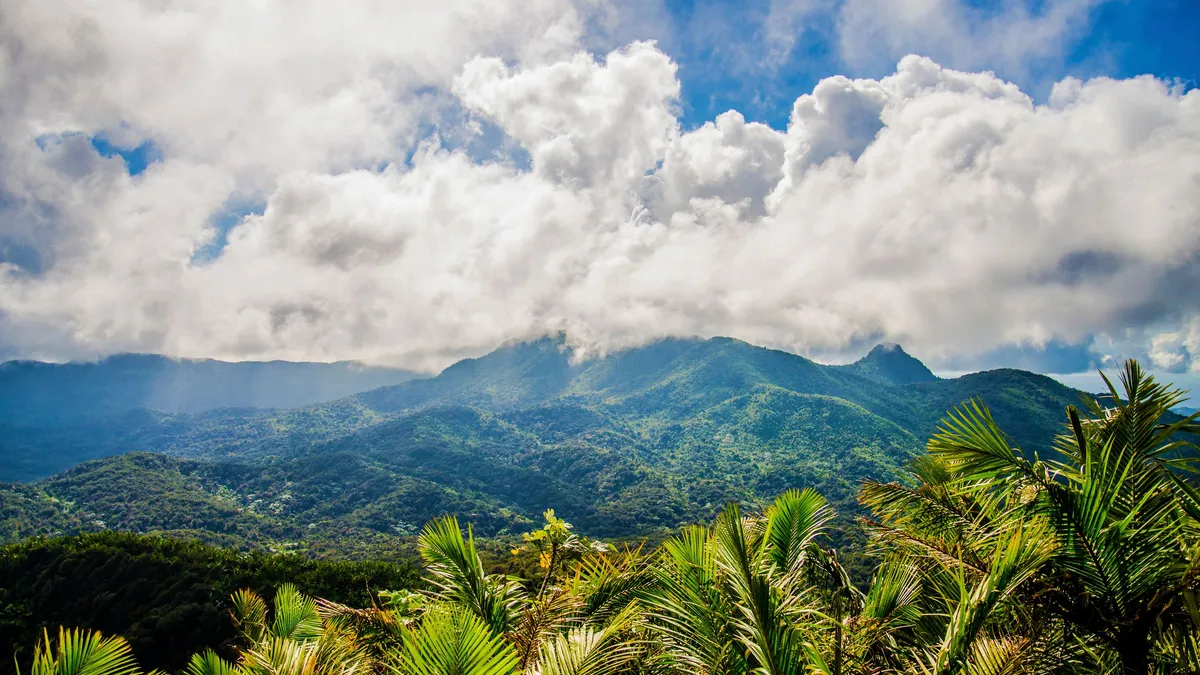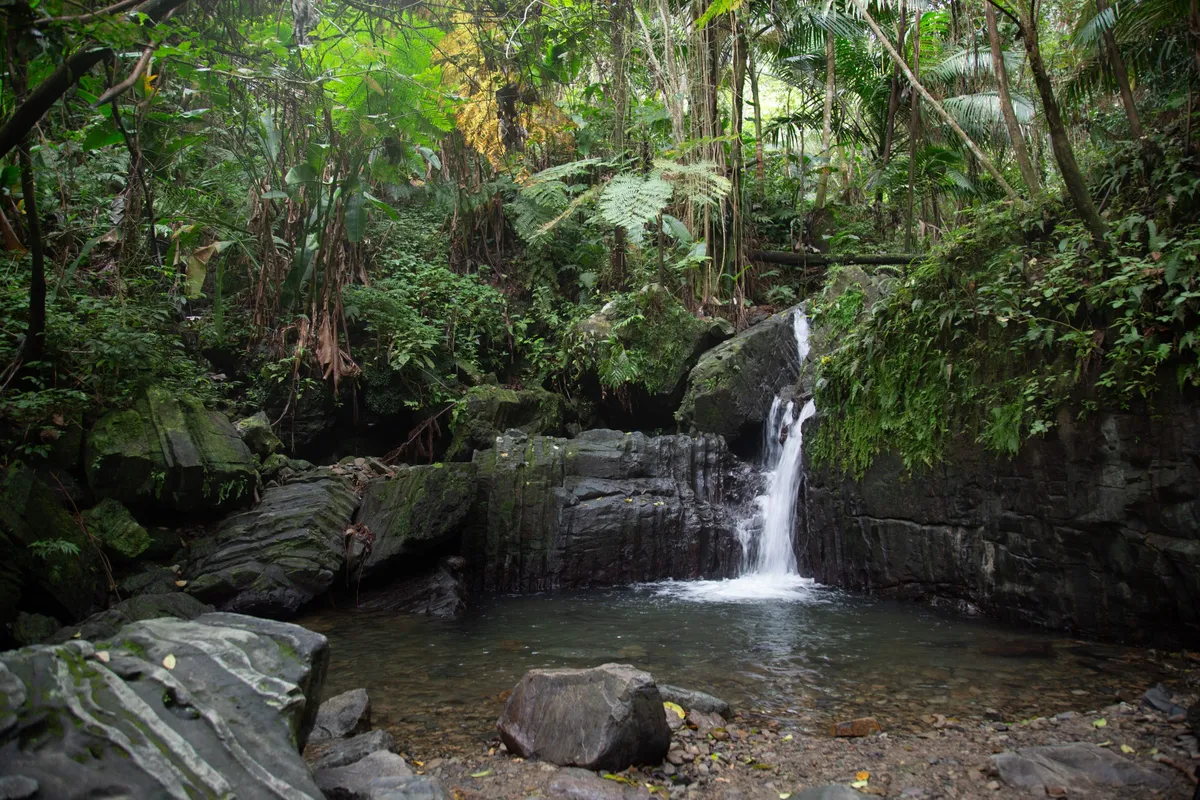Puerto Rico pulses with a vibrant cultural rhythm that extends far beyond its sun-drenched beaches and historic forts. This Caribbean island boasts one of the world’s longest holiday seasons, stretching from November well into January, but the festive spirit flows year-round. The island’s calendar is packed with dynamic celebrations, from massive international street parties to intimate town fiestas patronales. To truly understand Puerto Rican culture, you need to join its celebrations. This insider’s guide explores the atmosphere, traditions, food, and music that define these essential cultural experiences, helping you navigate the best Puerto Rico festivals like a local. From the world-famous street parties of Old San Juan to hyper-local patron saint festivals animating every municipality’s central plaza, each event offers a unique window into the island’s rich tapestry of Taíno, Spanish, and African influences.
Puerto Rico’s Festival Calendar at a Glance
For travelers planning their visit, this calendar helps align your travel dates with cultural interests, offering a snapshot of the year’s most significant celebrations.
The Unmissables: Puerto Rico’s Top 3 Most Iconic Festivals
While the island’s calendar overflows with celebrations, three marquee events stand out for their scale, history, and cultural significance. These festivals draw international crowds and offer the most profound immersion into the island’s festive identity.
Fiestas de la Calle San Sebastián (SanSe): The Ultimate Caribbean Street Party
The Fiestas de la Calle San Sebastián, universally known as SanSe, transforms Old San Juan’s historic heart into a massive four-day cultural explosion, serving as the unofficial finale to Puerto Rico’s long Christmas season. What started in the 1950s as a small religious procession honoring Saint Sebastian was revived in 1970 by esteemed historian Ricardo Alegría, who transformed it into today’s cultural behemoth, attracting over 200,000 people and gaining international recognition as one of the top Puerto Rico festivals.
The Atmosphere: Day Versus Night
SanSe presents striking contrasts throughout the day. During daylight hours, families fill the old city plazas while the air thickens with street food aromas. Island artisans set up stalls showcasing everything from handcrafted jewelry to traditional paintings, creating a vibrant open-air market. As the sun sets, however, a palpable shift occurs. The streets transform into an electrifying, shoulder-to-shoulder party. Music pulses from every corner—a mix of live performances on multiple stages and impromptu percussion circles—compelling everyone to dance.
Firsthand accounts often compare the festival’s scale to Mardi Gras in New Orleans, but with a distinct character. One attendee described it as “New Orleans without trash and puke in the streets,” highlighting a joyous but generally well-maintained environment despite massive crowds. The sensory experience is intense: traditional plena rhythms blend with the visual spectacle of the colonial city packed with people. One brutally honest account noted cobblestones can become slick with “pee, vomit, booze and some light rain.” The festival’s immense popularity creates a beautiful chaos, presenting both logistical hurdles and unforgettable cultural immersion for prepared travelers.
Key Traditions You Can’t Miss
The festival anchors around several core traditions. The official kickoff is the Comparsa de los Cabezudos, a whimsical parade of performers wearing giant papier-mâché heads depicting well-known figures from Puerto Rican folklore and history, like Doña Fela (a beloved former San Juan mayor) and El General (a local eccentric). This procession winds through the streets, signaling the party’s start.
Throughout the four days, artisan markets—particularly those within the historic Cuartel de Ballajá—become essential stops for purchasing authentic, locally made crafts. Perhaps SanSe’s most magical element is the spontaneous music. It’s common to stumble upon circles of musicians playing traditional bomba and plena, with locals joining in to sing and dance—a powerful, authentic display of living culture.
Insider’s Playbook: How to Survive and Thrive at SanSe
Navigating SanSe requires strategy, as getting there often presents the biggest challenge. Driving into Old San Juan isn’t an option for the public since streets are blocked far from the city center. Rideshare services like Uber become notoriously difficult to book and experience extreme surge pricing, making them unreliable. The most effective solutions, recommended by seasoned attendees, are the official free shuttle buses running from designated points like the Sagrado Corazón train station or Hiram Bithorn Stadium. Another excellent alternative is the ferry from Cataño, which drops passengers directly at Old San Juan’s edge, bypassing road traffic entirely.
Accommodation presents the other major hurdle. Staying directly within Old San Juan provides the most immersive experience but requires booking many months—or even a year—in advance. Nearby neighborhoods like Condado, Miramar, or Santurce offer more options but necessitate careful planning for the daily commute into the festival zone.
Veteran attendees offer several indispensable tips for a successful SanSe experience. First, comfortable footwear is non-negotiable—wear sneakers, not sandals, as cobblestone streets are uneven and you’ll walk for miles. Bring cash, as many food and craft vendors don’t accept cards. Given the massive crowds, cell service can be spotty, so establish a clear meeting point with your group in case of separation. Finally, if you see a portable toilet without a line, use it—the opportunity may not come again soon.
Carnaval Ponceño: Masks, Music, and 250 Years of History
Rooted in traditions dating back to 1858, Carnaval Ponceño stands as one of the oldest and most culturally significant carnivals in the Western Hemisphere. This week-long pre-Lenten celebration takes over Ponce, Puerto Rico’s “Pearl of the South,” filling its streets with parades, music, and a deep sense of history.
While often compared to Mardi Gras to provide a familiar reference for American travelers, this comparison can be misleading. Firsthand accounts from attendees describe the atmosphere as “very tame” and “lovely” in comparison, emphasizing it’s more of a vibrant cultural pageant than a wild, debaucherous party. The energy is festive and family-friendly, centered on community pride and the preservation of centuries-old traditions. This distinction is crucial for setting accurate expectations—the value for experiential travelers lies not in replicating a New Orleans-style event but in witnessing a celebration that’s uniquely and authentically Puerto Rican.
Decoding the Traditions: The Story of the Vejigantes and the Sardine
The heart and soul of Ponce Carnival is the vejigante, a folkloric character whose origins trace back to medieval Spain but have been thoroughly infused with African and Taíno influences in Puerto Rico. These figures represent playful demons meant to scare away evil spirits and chastise sinners. They’re most famous for their elaborate, handcrafted papier-mâché masks featuring multitudes of horns and menacing fangs. The name itself is a portmanteau of vejiga (bladder) and gigante (giant), referencing the historical tradition of performers carrying inflated, dried cow bladders, which they use to playfully swat onlookers during parades.
The carnival unfolds with a series of traditional events. It begins with the Arrival of the Vejigantes and the entrance of King Momo, a character embodying the carnival’s spirit. The week includes the Coronation of the Carnival Queen and culminates in a grand parade on Sunday. The festival’s unique and poignant finale is the Entierro de la Sardina (Burial of the Sardine). This mock funeral procession, often led by drag queens and fake mourners, symbolically lays the revelry to rest and marks Lent’s solemn beginning.
Insider’s Playbook for Ponce Carnival
To fully experience this incredible event on the Puerto Rico festivals calendar, planning is key. The grand parade on Sunday is the main attraction, but for a more local and intimate experience, the “pre-game” Carnaval de Vejigantes de la Playa de Ponce, held the weekend before, comes highly recommended. Accommodations in Ponce fill up quickly, so booking a hotel well in advance is essential. Central options like the Ponce Plaza Hotel & Casino or the historic Meliá Century Hotel place visitors right in the heart of the action.
Attendees advise arriving early for parades to secure good viewing spots, as many roads in the city center will be closed. Due to the strong southern sun, bringing an umbrella for shade, along with chairs and a cooler of water, is a practical tip offered by locals.
Fiesta de los Reyes Magos: A Heartwarming Holiday Finale
In Puerto Rico, the Christmas season doesn’t end on December 25th. The festive spirit continues until the Fiesta de los Reyes Magos, or Three Kings’ Day, on January 6th. This celebration of the Epiphany is, for many families, the most important day of the holidays, when children traditionally receive their gifts.
The Atmosphere and Tradition
The atmosphere of this festival centers on deep-seated tradition, faith, and family-focused joy. It offers a stark and beautiful contrast to the massive secular parties of SanSe and Ponce Carnival. The most cherished custom takes place on the eve of January 5th when children across the island gather fresh grass or hay and place it in a shoebox under their beds as a gift for the weary camels of the Three Kings. Overnight, the Magi “visit,” taking the grass and leaving presents in its place. This practice powerfully exemplifies the living traditions that anchor Puerto Rican identity.
Experiencing the Tradition
While this Puerto Rican holiday is celebrated island-wide, the towns of Juana Díaz and Isabela are the epicenters of public festivities. Juana Díaz, in particular, is famous for its large-scale celebration and is even known as the “Home of the Three Kings.” The highlight of the day is the parade where actors portraying the Three Wise Men—Melchior, Gaspar, and Balthazar—ride on horseback through the town, waving to crowds and handing out gifts to children.
For visitors, this isn’t a festival for active revelry but rather an opportunity for respectful observation of a cherished cultural and religious event. The celebration at Luis Muñoz Marín Park in San Juan also offers a large and accessible version of the festivities for those staying in the capital.
A Festival for Every Traveler: Find Your Perfect Puerto Rican Fiesta
Beyond the “big three,” the schedule of Puerto Rico festivals offers incredible diversity with unique experiences tailored to wide-ranging interests, from culinary exploration and high culture to folkloric traditions.
For the Foodie: A Taste of the Island’s Harvest
Puerto Rico’s rich agricultural heritage becomes a cause for celebration through numerous festivals dedicated to the island’s bounty. The Festival de la Novilla in the western town of San Sebastián stands as one of the most unique. Held in January, this “Heifer Festival” is a quirky and charming celebration of the region’s cattle-ranching history. The main event is a parade led by a young cow (novilla) adorned with a crown of flowers, followed by floats depicting rural life. The town square fills with street food vendors, local artisans, and even amusement park rides, making it a lively family event that also serves as a fundraiser for local scholarships.
For fruit lovers, the Festival de la Piña Paradisíaca (Pineapple Paradise Festival) is a must. Celebrated in the coastal community of La Parguera in Lajas, this event is a tribute to the island’s national fruit. Visitors can buy locally grown pineapples, sample a wide array of pineapple-based foods and drinks, and enjoy live music by the sea. This festival offers a perfect opportunity for “destination stacking,” as travelers can enjoy festivities by day and then experience the world-famous La Parguera bioluminescent bay by night. For those looking to venture further, hyper-local events like the Coffee Festival in the mountain town of Maricao and the Macabeo Festival in Trujillo Alto offer even deeper dives into specific culinary traditions.
For the Culture Vulture: Immersing in Arts, Music, and Heritage
Travelers seeking deeper connections with Puerto Rican arts and history will find a wealth of options. The Casals Festival, held in San Juan, is one of the most prestigious classical music events in the Caribbean. Founded in 1957 by legendary cellist Pablo Casals, who made Puerto Rico his home, the festival attracts world-class musicians to perform alongside the Puerto Rico Symphony Orchestra. Reviews praise the “exquisite experience” and the “exceptional acoustics” of its main venue, the Sala Sinfónica Pablo Casals, making it a sublime event for music aficionados.
For a taste of pure folkloric energy, the Festival de las Máscaras de Hatillo is an unforgettable experience. Taking place on December 28th (the Day of the Holy Innocents, a Puerto Rican version of April Fool’s Day), this festival is a riot of color and joyous chaos. Participants don elaborate costumes and unique wire-mesh masks to represent and mock King Herod’s soldiers from the biblical story. One firsthand account describes it as a “sense-overwhelming experience,” with the roar of decorated floats and the playful tradition of participants spraying shaving cream on spectators, creating a wild and immersive atmosphere.
In the town of Loíza, the Festival de Santiago Apóstol (Festival of Saint James the Apostle) powerfully celebrates the island’s Afro-Puerto Rican roots. This festival features its own distinct style of vejigante masks, crafted from coconut husks and driftwood, visually different from Ponce’s papier-mâché masks. The event is defined by the thunderous rhythms of bomba music, a traditional genre where a dynamic, improvisational conversation takes place between the dancer’s movements and the drummer’s beat.
Further into the island’s mountainous interior, the Festival Nacional Indígena in Jayuya honors Puerto Rico’s indigenous Taíno heritage. This event features traditional ceremonies, costume pageants, and an opportunity to learn about the island’s pre-Columbian history.
For the Mystic and Adventurous: Unique Island Rituals
One of Puerto Rico’s most enchanting and unique celebrations is the Noche de San Juan. Held on the eve of the summer solstice, June 23rd, this event transforms the island’s beaches into sites of festive and mystical ritual. The tradition is rooted in both pagan and Christian customs celebrating St. John the Baptist. As midnight approaches, locals and visitors alike gather by the water’s edge. At the stroke of twelve, everyone participates in the core ritual: taking a series of backward plunges into the ocean. It’s believed that falling backward into the waves—traditionally three, seven, or even twelve times—cleanses the soul of negativity and brings good luck for the year ahead.
Firsthand accounts from attendees capture the magic of the night. One visitor described the feeling as a “spiritual blessing,” a “unification of friends and family,” and a “ritual to sort of renew a baptismal Covenant of being free and being happy.” The beaches come alive with bonfires, picnics, music, and a palpable sense of shared energy, making it a profoundly communal and unforgettable experience.
The Essential Festival-Goer’s Toolkit for Puerto Rico
Attending a festival in Puerto Rico is an immersive experience, and being prepared makes all the difference. This toolkit provides practical, evergreen advice for any traveler looking to join the celebrations.
What to Wear: Dressing for the Heat, Crowds, and Cobblestones
The primary principle for festival attire in Puerto Rico is comfort. The tropical climate demands lightweight and breathable fabrics such as cotton and linen to stay cool. Flowy summer dresses, shorts, and casual tops with bright, fun prints are excellent choices that align with the island’s vibrant aesthetic.
Footwear is a critical, non-negotiable element of your festival wardrobe. Many celebrations, especially SanSe in Old San Juan, involve extensive walking on historic, uneven cobblestone streets. For this reason, comfortable sneakers or sturdy, well-supported sandals are essential. It’s also wise to pack a light layer, like a button-down shirt or a thin jacket, as many indoor restaurants and shops use strong air conditioning, which can feel chilly after being in the sun.
What to Eat: A Guide to Festival Street Food (Antojitos)
One of the greatest joys of any Puerto Rican festival is the food. The streets come alive with vendors selling antojitos, a term for “little cravings” or savory snacks that are a cornerstone of the island’s culinary culture. These fried delights are a must-try.
Must-Try Savory Bites
- Alcapurrias: These are torpedo-shaped fritters made from a masa (dough) of green bananas and yautía (a root vegetable), stuffed with seasoned ground beef (picadillo) and deep-fried to crispy perfection.
- Bacalaitos: Large, thin, and crispy fritters made from a batter of salted codfish. They’re a classic beach and festival snack.
- Pinchos: The Puerto Rican version of a kebab. These are skewers of tender, marinated chicken or pork, grilled over an open flame and often topped with a slice of bread to soak up the juices.
- Rellenos de Papa: A beloved comfort food, these are mashed potato balls stuffed with savory picadillo, coated in batter, and fried until golden brown.
- Empanadillas/Pastelillos: These are fried turnovers with crispy dough, filled with a variety of ingredients like ground beef, chicken, crab meat, or even pizza toppings.
No street food experience is complete without the island’s signature condiment: a simple yet addictive pink sauce known as mayo-ketchup. This blend of mayonnaise, ketchup, and a hint of garlic is the perfect accompaniment for nearly every fried food.
The Soundtrack of Celebration: Understanding the Music
Music is the undeniable heartbeat of every Puerto Rican festival. The air is constantly filled with rhythms that reflect the island’s diverse cultural history. Understanding these key genres can deepen the festival experience.
Key Genres to Know
- Bomba: This is one of the oldest and most powerful musical traditions, with deep roots in the island’s African heritage. It’s not just music but a dynamic and spiritual dialogue between a lead drummer and a dancer, whose movements dictate the rhythm. It’s most strongly associated with the town of Loíza.
- Plena: Often called the “sung newspaper,” plena is a folkloric genre that uses a chorus and handheld frame drums called panderos to tell stories, share news, and offer social commentary. Its narrative lyrics and catchy rhythms make it a staple of community gatherings.
- Salsa: While popularized in New York City, salsa’s roots are firmly planted in the Caribbean, with Puerto Rican musicians playing a pivotal role in its development. This vibrant, brass-heavy dance music is a guaranteed sound at any major celebration.
- Décima/Trova: This is the poetic folk music of Puerto Rico’s mountainous interior (jíbaro country). Characterized by sung ten-line verses accompanied by the cuatro (a traditional Puerto Rican string instrument), it’s often heard at more traditional and rural festivals, especially around Christmas.
Essential Safety and Logistics Tips for Any Festival
While Puerto Rico festivals are generally joyous and welcoming, the large crowds and lively atmosphere call for some practical safety measures. Petty crime, such as pickpocketing, can occur in dense crowds, so it’s important to remain aware of your surroundings and keep personal belongings secure. Attending with a group and establishing a meeting point beforehand is a wise strategy, as cell service can be unreliable.
Staying hydrated is crucial in the warm tropical climate, especially when dancing and walking for hours. Logistically, it’s always a good idea to bring cash, as many street vendors and smaller artisans don’t accept credit cards. To get the best experience and avoid the most significant traffic and crowds, arriving early is a universally recommended tip. Finally, a core part of being a responsible traveler is respecting local customs and the environment. This includes being mindful of community traditions and always cleaning up any trash to leave the beautiful festival spaces as you found them.
More Than a Party, It’s the Heartbeat of a People
The Puerto Rico festivals are far more than simple entries on a tourist’s itinerary—they’re the most authentic and exhilarating portals into the island’s rich and complex culture. Each event is a vibrant, living expression of a history that masterfully blends Taíno, Spanish, and African influences into a singular Boricua identity. These celebrations are where history isn’t just remembered but actively lived, danced, and sung in the streets. Whether getting lost in the jubilant crowds of SanSe, marveling at the formidable artistry of a vejigante mask in Ponce, or quietly observing the reverent procession of the Three Kings, you’re not merely attending an event—you’re participating in a living tradition. For travelers seeking connections that go beyond a typical beach vacation, diving into the island’s festival scene means witnessing Puerto Rico at its most passionate, its most historic, and its most alive.
Read more:
